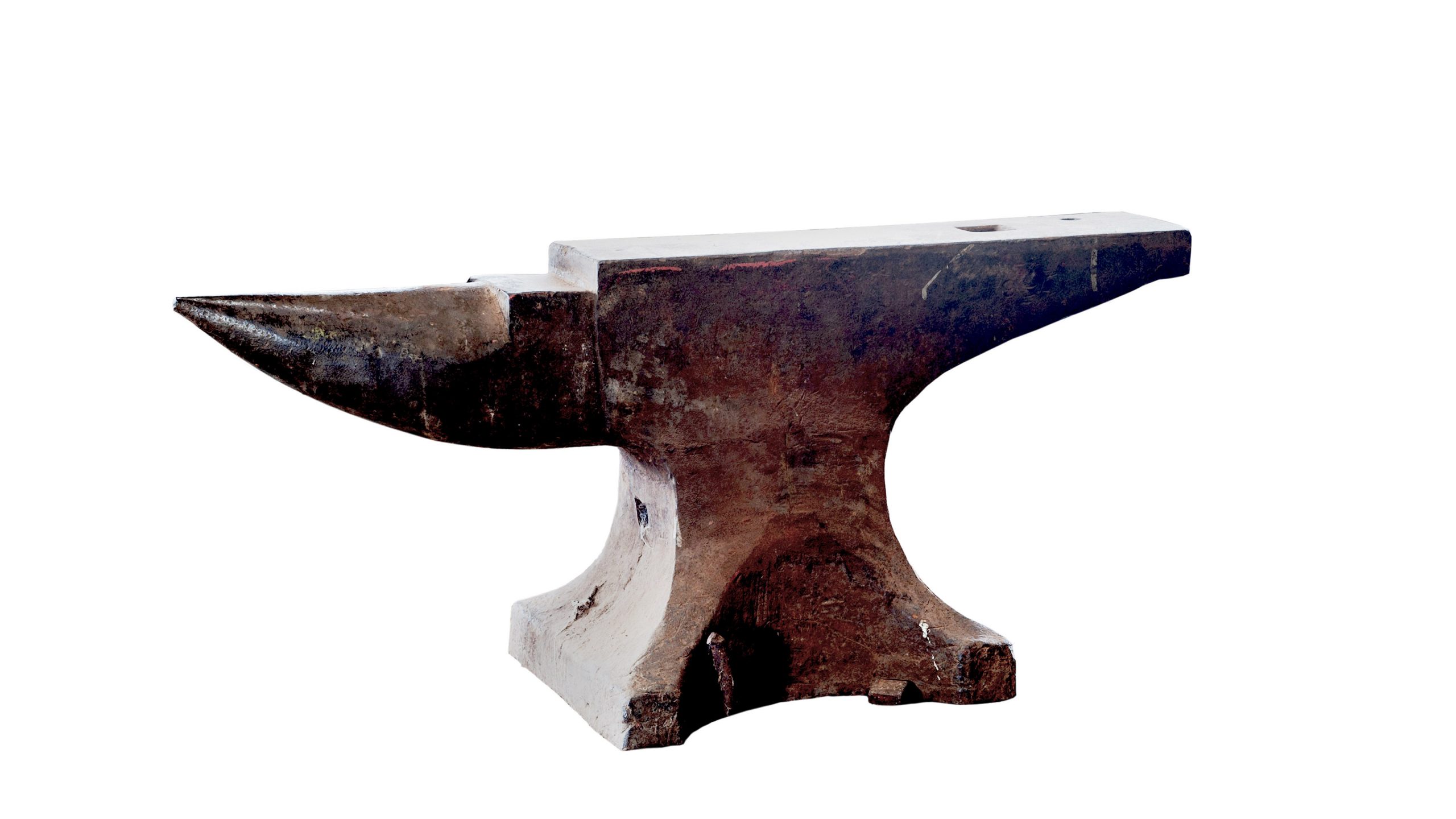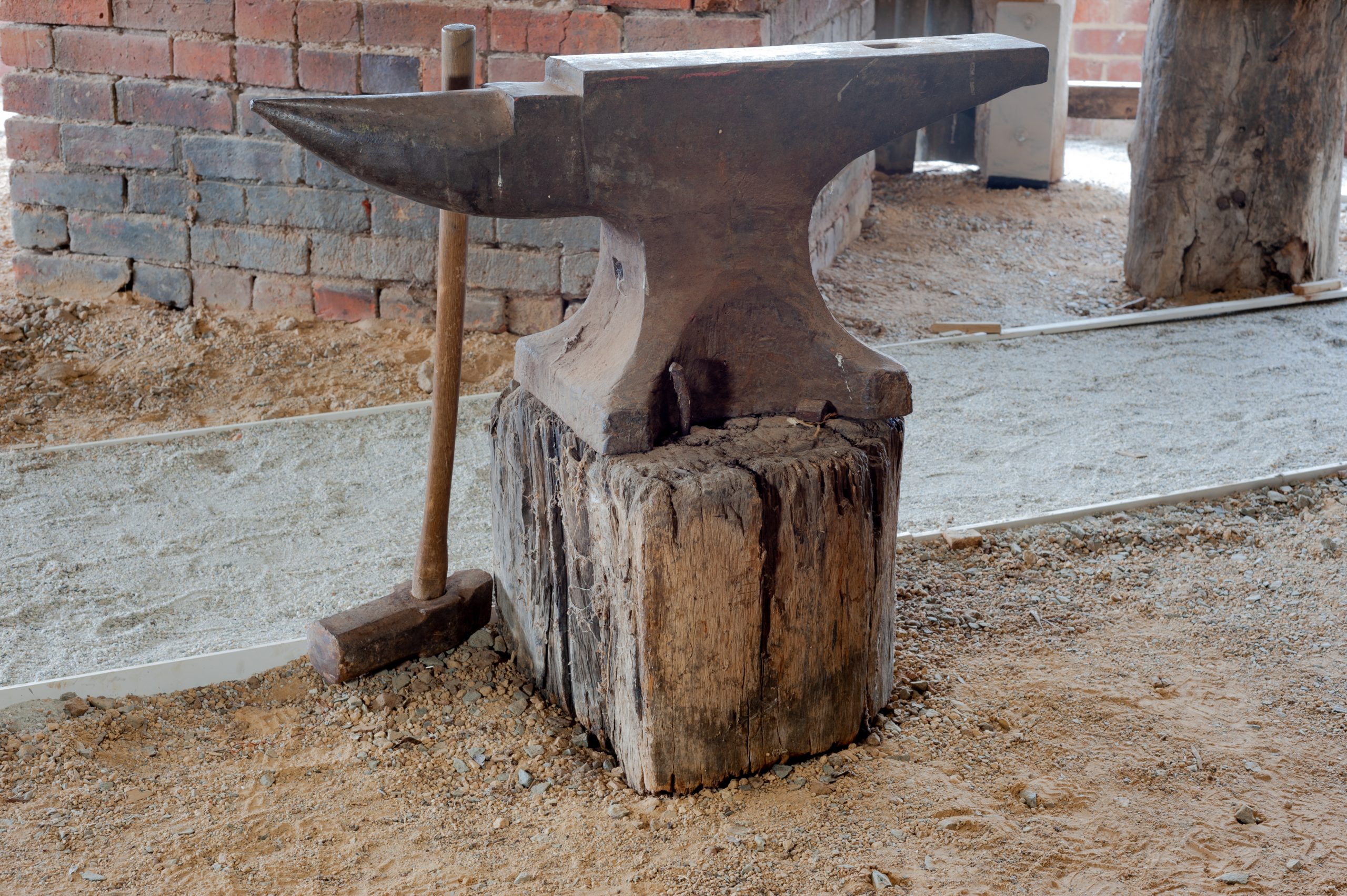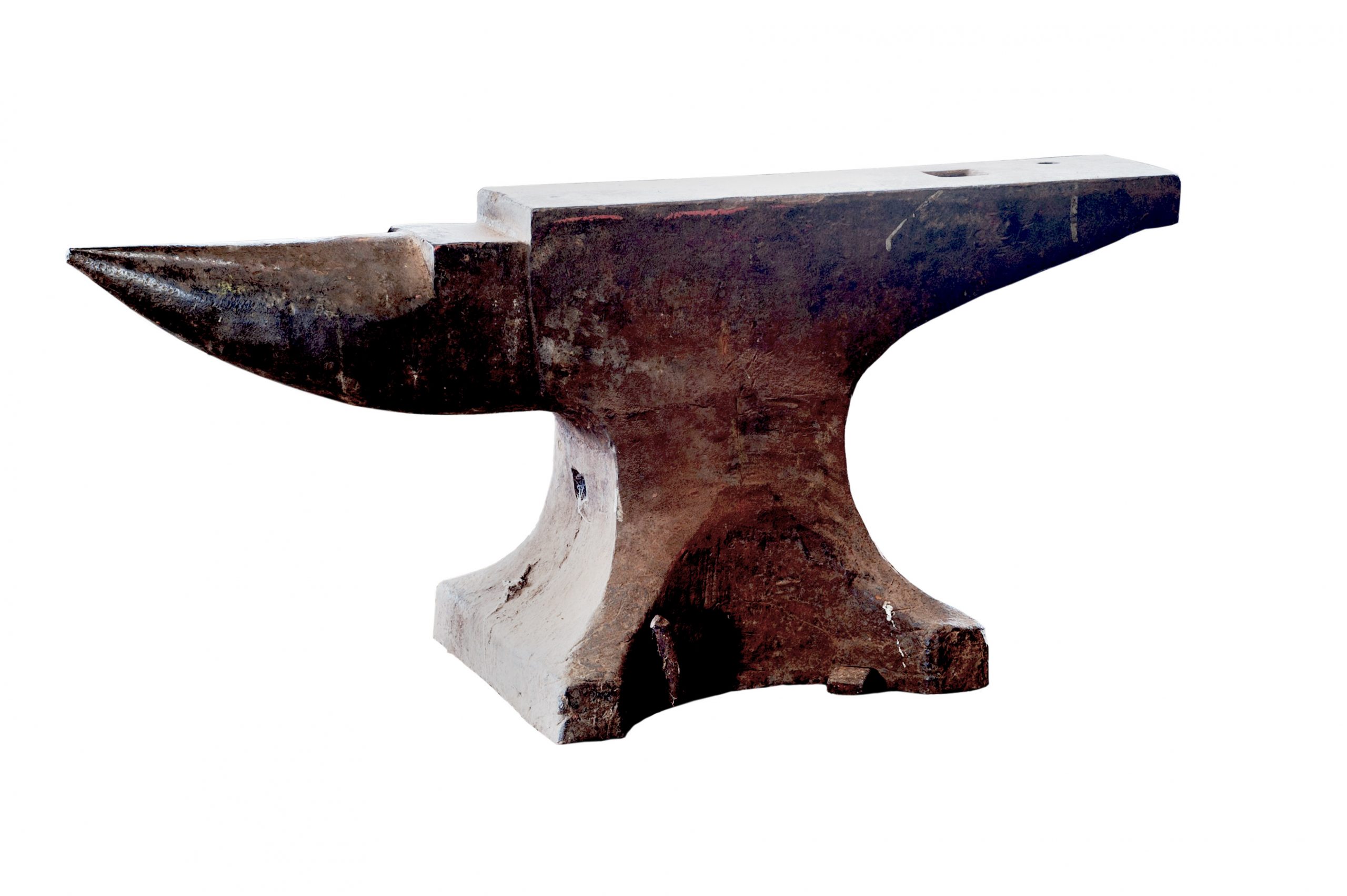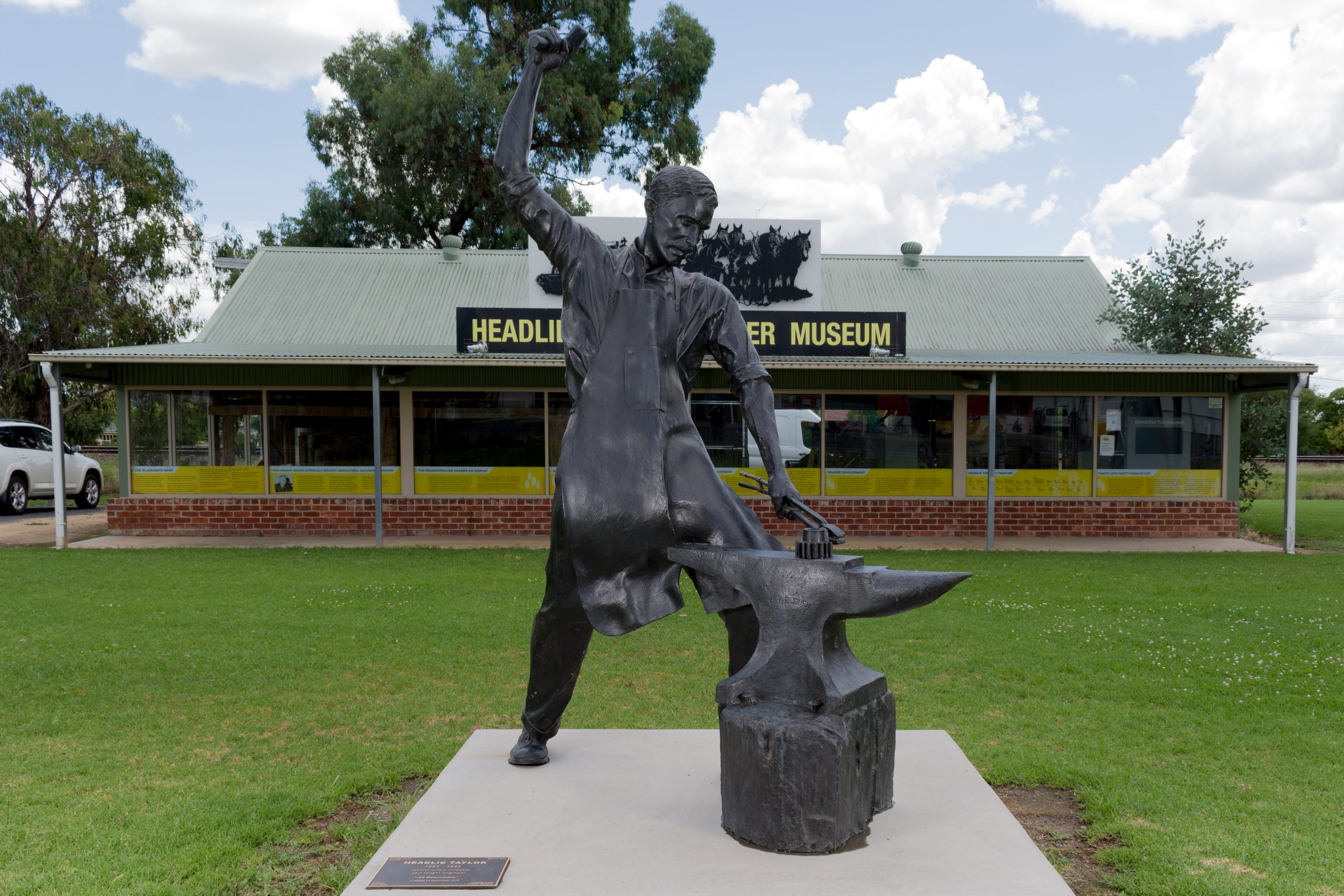Weighty Ideas
Headlie Taylor’s Hay-Budden Anvil
Along with the forge, the anvil was the most important tool in the blacksmith’s kit. Using the anvil, hot metal was ‘worked’. It was repeatedly hammered and shaped around its angled and conical edges.
Imagine the loud clanging blow of a hammer forming the metal, while the whoosh of bellows pumped air into the forge to maintain enough heat to soften it. Now imagine all this in the middle of summer in western NSW.
Manufactured by the Hay-Budden Manufacturing Company in New York around 1894, this 345 pound anvil (approximately 156 kilograms) was owned and used by Albury’s celebrated agricultural innovator Headlie Taylor. In Headlie’s workshop, it was mounted on a large tree stump to give its working surfaces height. This arrangement also reminds us that this peculiar tool was part of a working farm and at a time when ‘making do’ was widely done.
One often repeated anecdote about Headlie Taylor relates to the problem faced when he went to take the anvil home to his blacksmith shop. How do you lift something roughly twice your body weight off the ground and into a horse drawn cart?
In a display of Headlie’s clever problem solving, rather than loading the anvil onto his cart Headlie hoisted the anvil underneath it. Using rope, it was lifted just enough to clear the ground, a technique also used by timbergetters to haul fallen logs. By allowing the anvil to drag or touch the ground it could act as a simple brake, if the cart started to get too fast. Once at its destination, it was simply a matter of maneuvering the anvil into place and lowering it.
Headlie’s simple solution saved a lot of back strain–just like the grain harvesting innovations he created using this very weighty anvil.






